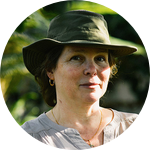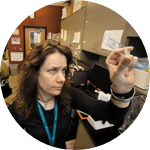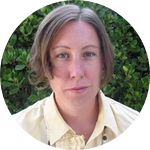Project Results
Innate Chemical Resistance of Virginia Big-eared Bats (Corynorhinus townsendii virginianus) to White-Nose Syndrome
Daniel S. Danford, Leah Shriver, Hazel A. Barton
Other
About This Project
With more than 5 million bats already dead, White-nose Syndrome (WNS) is one of the most devastating wildlife diseases in modern history. While almost all bats infected with WNS eventually die, some species are naturally resistant, including Virginia big-eared bats. Our research aims to understand why and how these bats survive, what this can tell us about how the fungus kills, and what it might mean for bat populations.
Ask the Scientists
Join The DiscussionWhat is the context of this research?
Understanding the natural resistance of certain bat species to WNS provides critical information on the likely impact that this disease will have on other bat species, including threatened and endangered species. Our data may help us identify understand the nature and dynamics of WNS on remnant bat populations within WNS-affected areas, while also identifying mechanisms that protect bats from the pathogen, potentially generating new methods that can be used to control WNS and protect bats.
What is the significance of this project?
A lot of existing research is based on applied research - that is, what can be get to kill WNS. While this research is laudable, despite millions of dollars of government funding, no single agent has been able to protect wild bat populations to date. We believe that an alternate approach is to better understand the natural processes that already protect certain bat species from this devastating disease. As this is a basic (discovery) science approach to solving the WNS, we haven't be able to secure funding for the research by agencies with funding priorities that only target finding a cure.
What are the goals of the project?
1. Identify the chemical compounds that are found on bats naturally resistant to WNS.
2. By comparisons with bat species susceptible to WNS, narrow down the potential chemical defenses of WNS-resistant bats to those that are protective.
3. Chemically synthesize the novel compounds and test them for anti-WNS activity.
4. Determine the origin of these compounds - are they made by the bats themselves, or is there a natural, probiotic defense by other microbial species on these bats.
Budget
Most of the costs of this work will be for a student salary to run the bat samples, chemical identification and chemical synthesis. For the chemical analyses, funds are requested for high-pressure liquid chromatography columns (which are generally $500 - $800/column), the solutions to run the samples through the columns (to identify compounds) and any synthesis activities that allows us to determine if the compounds we identify are killing WNS. Funds will be used for the chemical identification of VBE bats and comparing chemistry with other bat species. The remaining funds will then be used to purchase commercial forms of the identified lipids or (more likely) synthesize these compounds from scratch. It is hard to predict exactly what chemistry will be needed to synthesize these novel lipids, so we have based our costs on the preliminary data that suggests what these synthesis reactions might look like.
Endorsed by
Meet the Team
Hazel Barton
I grew up in the UK and started exploring caves when I was just 14. After studying in the US as an exchange student, I returned to get my PhD in Medical Microbiology from the University of Colorado. I thought I'd spend my entire career studying medical microbiology; however, when I was lucky enough to do a post-doc in the laboratory of Dr. Norman Pace, a famous scientist AND cave explorer, he convinced me that my caving skills would allowed me to carry out microbiology in some of the more remote cave environments on Earth. Since then I've become a Professor of Biology and Geosciences at the University of Akron, where my research lab studies microbial interactions and adaptations to cave environments, which has been funded by both the US National Science Foundation (NSF) and the US National Park Service. Since 2008 we have been investigating the role of Pseudogymnoascus destructans, the fungus that causes White-nose Syndrome, developing the first Federal guidelines for decontamination. The research of my lab group has been featured in Sports Illustrated, Forbes, National Geographic Explorer, Outside, Science News, The Scientist, Popular Mechanics, Wired, Geo and The Smithsonian magazines, on NPR and BBC Radio, on Animal Planet, the History Channel, the CBS Early Show, BBC TV and in the IMAX movie Journey into Amazing Caves. I remain an avid cave explorer, having explored caves on five continents, have served as a past director of the National Speleological Society (NSS), and am currently a director of the National Cave and Karst Research Institute. I'm also a Fellow of the National Speleological Society, a Kavli Fellow of the American Academy for the Advancement of Science, Chair of the Committee on the Status of Women in Microbiology for the American Society for Microbiology, and the recipient of an NSF CAREER Award.
Leah Shriver
Using new technologies, we now know that there are thousands of molecules in our bodies that have not yet been identified that contribute to our health. My laboratory focuses on discovering these compounds and manipulating them to prevent disease. I am particularly interested in discovering new molecules that have antimicrobial and anti-inflammatory properties, a goal that will be achieved with this project. I received my B.A. in Biology from Mount Holyoke College and it was here that I began to explore my passion for basic science. I received my Ph.D. from the Medical College of Wisconsin in 2007 and subsequently completed a postdoctoral fellowship at The Scripps Research Institute and the University of California, San Diego funded by the National Institutes of Health. During my postdoctoral training, I had the unique opportunity to obtain training on advanced analytical technologies to study metabolism. It was here that I was able to immerse myself in interdisciplinary projects to help develop new treatments for disease. I joined the faculty at the University of Akron in 2012 and continue to apply new OMICS technologies to identify therapies for infectious and inflammatory diseases. I have received an AB Sciex Young Investigator Award and am currently funded by the National Institutes of Health.
Lab Notes
Nothing posted yet.
Additional Information
We have a dedicate biological safety level (BSL) 2 facility at the University of Akron where all WNS experiments are conducted. We have already collected all the necessary swab samples from bats under approved collection permits working with professional bat biologists. No animals will be used or harmed in the planned experiments.
Project Backers
- 110Backers
- 116%Funded
- $6,806Total Donations
- $61.32Average Donation



